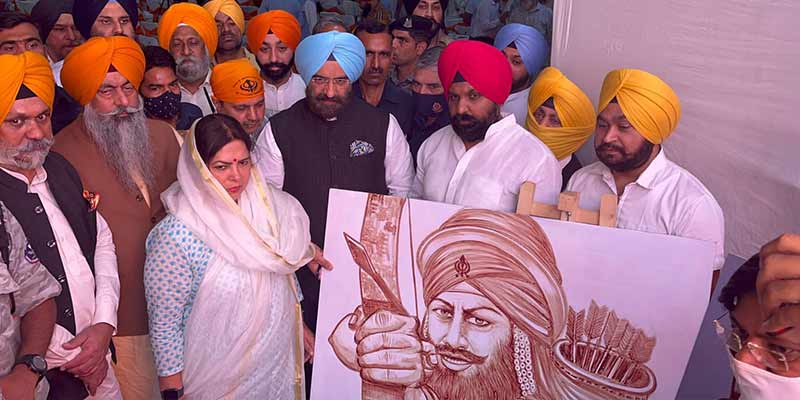- India
- Jun 26
NMA observes martyrdom day of Baba Banda Singh Bahadur
The National Monuments Authority (NMA), under the ministry of culture, observed the martyrdom day of Baba Banda Singh Bahadur on June 25 at Red Fort lawns.
The event was attended by Minister of State for Culture and External Affairs Meenakshi Lekhi, along with NMA chairman Tarun Vijay and Baba Jatinder Pal Singh Sodhi, 10th generation descendant of Banda Bahadur.
Who was Baba Banda Singh Bahadur?
• Baba Banda Singh Bahadur was a great Sikh warrior and a commander of Khalsa army who defeated the Mughals and liberated a large part of North India from oppressive Mughal rule and established the Khalsa rule in Punjab.
• Banda Singh Bahadur abolished the zamindari system and granted property rights to the tillers of the land.
• He was a noble ruler who introduced the Nanakshahi coins.
• He was captured by Mughal ruler Farrukhsiyar and his martyrdom took place in 1716 in Mehrauli where a monument stands in his memory.
National Monuments Authority
• The National Monuments Authority (NMA) was established in 2011 as a statutory body constituted under the provisions of Ancient Monuments and Archaeological Sites and Remains (Amendment & Validation) Act, 2010. It is also known as the AMASR Act.
• The basic objective for setting up of NMA is implementation of the statutory provisions of prohibited and regulated areas of centrally protected monuments for the purpose of construction, repair/renovation of buildings and public projects.
• There are 3,691 centrally protected monuments/sites in India. Uttar Pradesh tops the list with 745 monuments and sites, followed by Karnataka at 506 and Tamil Nadu at 413.
• With increase of urbanisation, development, growth and increasing population pressure, there is growing pressure on land, including the land around centrally protected monuments. As this often affects the monument/site adversely, it is important that such growth around the centrally protected monuments is properly regulated, balancing the needs of individuals and growth and development on the one hand and the requirements of preservation and protection of these monuments on the other.
• Several functions have been assigned to the NMA for the protection and preservation of monuments and sites through management of the prohibited and regulated area around the centrally protected monuments.
• NMA has been mandated to frame monuments specific heritage bye-laws to regulate construction activities around the centrally protected monuments.
• It has also been given the responsibility of classification and gradation of monuments in consultation with the Archaeological Survey of India (ASI).
• The Act provides for NMA to be constituted with a chairperson and up to five whole time and five part time members each and a member secretary.
Manorama Yearbook app is now available on Google Play Store and iOS App Store

